There was once a Broadway play called Sister Mary Ignatius Explains It All For You.
It was a modern 70s era play about a nun who explains the basic tenets of the Catholic faith to the audience while former students visit her & question the truth of it all. It riled up a fair amount of people as it explained the ironic inconsistencies between Catholic doctrine and practical reality.
Growing up in Catholic school, as I did, I could appreciate the purport of the play.
As an educator, I, myself, get to do a lot of explaining.
Although, I’m usually not getting into topics about the throws of religious faith & man’s struggle with them… but more into things that are just as important like scales, chords, and for today’s discussion, intervals.
Though here I am not going to get way into the deep dark depths of intervals.
That takes too long and this is a blog, not a one semester college music theory class.
So let’s just stick our toe in the water, shall we?
(you know, nuns used to speak to us students in third person a lot)
Have I ever mentioned I went to Catholic school?
So I will now explain intervals (somewhat) all for you…
The term interval refers to the distance between two pitches.
• the smallest distance is a half step.
The largest distance is… well, here’s where I have to cut myself off because I just got started and I’ve already gotten to a part where it gets a little involved.
To finish that last sentence, I’d have to get into explaining compound intervals and a bunch of other stuff and I’ve already stated that I want to keep this simple today.
So let’s do this…
Let’s just focus on two intervals.
The two smallest intervals.
I already mentioned one of them- a half step.
The other one is a whole step.
And you might already have figured this out but you need to know:
• whole step = two half steps
Everything good?
Good.
Because they are the two smallest distances between two pitches, we can use these terms to explain things like scales, because scales have multiple pitches in them and with a lot of scales, they are either a half step or a whole step apart.
For instance, a Major Scale is often described by the half step & whole step distances from one note to the next…
whole • whole • half • whole • whole • whole • half
Key of C is the cleanest example (no sharps or flats)…
C D E F G A B C
The distance between C & D = whole step
The distance between D & E = whole step
The distance between E & F = half step
The distance between F & G = whole step
The distance between G & A = whole step
The distance between A & B = whole step
The distance between B & C = half step
Guitarists tend to deal with scales as patterns on the fretboard and those patterns are often dealt with cognitively by fingering in relation to strings & frets.
Which is cool, but being aware of the distance between one note & the next is a deeper layer of the story. This is where music theory starts to coalesce with what the fingers are doing on the fretboard. (learned that word, “coalesce”, in 8th Grade Vocabulary Class at American Martyrs Catholics School)
Now here is the important part… you want to be able to visually recognize these half steps and whole steps on the guitar fretboard.
On any given string, it is very straight forward:
• On any given string, from one fret to the next, in either direction, is a half step distance
• This means that two frets in either direction is a whole step distance
Many of you already knew that.
Cool.
For those of you that didn’t, now you do.
Cool.
But what about if you are going from a note on one string to a note on an adjacent string?
It behooves you to become equally as solid in recognizing half steps and whole steps in that situation as well as on a single string.
Yet in this instance, it isn’t as straight forward… however it’s not complicated either.
This is more easily explained with diagrams.
These fretboard diagrams are like a chord diagram: strings = vertical, frets = horizontal.
HALF STEPS BETWEEN ADJACENT STRINGS:
Between the 6th string & the 5th string, a half step is four frets apart.
This is true for whatever position you are in.
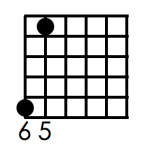
Between the 5th string & the 4th string, a half step is four frets apart.
This is true for whatever position you are in.
Between the 4th string & the 3rd string, a half step is four frets apart.
This is true for whatever position you are in.
Between the 2nd string & the 1st string, a half step is four frets apart.
This is true for whatever position you are in.
You are now asking, “But what about the 3rd & 2nd string?”
I am so glad you asked. I saved that pair for last because it is different from all the rest.
Between the 3rd string & the 2nd string, a half step is three frets apart.
This is true for whatever position you are in.
WHOLE STEPS BETWEEN ADJACENT STRINGS:
Between the 6th string & the 5th string, a whole step is three frets apart.
This is true for whatever position you are in.
Between the 5th string & the 4th string, a whole step is three frets apart.
This is true for whatever position you are in.
Between the 4th string & the 3rd string, a whole step is three frets apart.
This is true for whatever position you are in.
Between the 2nd string & the 1st string, a whole step is three frets apart.
This is true for whatever position you are in.
Go ahead… ask me again, “But what about the 3rd & 2nd string?”
I love it when you ask me that.
Between the 3rd string & the 2nd string, a whole step is two frets apart.
This is true for whatever position you are in.
Let’s go back to that C Major Scale.
Take this C Major scale pattern and play it ascending & descending on the guitar. Watch your left hand. Notice where the whole steps & half steps occur.
You are now paying attention to the distance between each note.
See? Whole steps & half steps… right where we said they were.
It’s not about finger number or fret number, it’s about whole steps & half steps.
As it turns out, ALL scales can be looked at as a series of half steps & whole steps, however, let it be known that some scales have larger distances that a whole step.
For instance, our good friend, the Minor Pentatonic scale, has a step & a half between the 1st and 2nd scale degree and between the 4th & 5th scale degree. Which means that the Major Pentatonic scale has a step & a half between the 3rd and 5th scale degree and between the 6th & 1st scale degree.
And then there’s the Harmonic Minor scale, which has a step & a half between the 6th & the 7th scale degree.
A step & a half ain’t no big thang either.
Just sayin’.
“And what was the point of all this?”
(you ask a lot of questions)
That’s what you’re thinking, correct?
Well, you should be… because I want you to question everything. It’s the Zen thing to do, you know. And by doing so, you engage with the concept at a deeper level & then you really start to think about what this all means for you.
I’ve already mentioned that this whole music theory story is a big deal & we guitarists tend to put much effort into finding ways around it. So I see it as my job to find ways to dish it out to y’all in bite sized portions so you don’t all freak out or anything like that.
You could think/see/hear any scale in terms of half steps & whole steps and this is extremely useful in myriad ways for creating music & learning music & performing music.


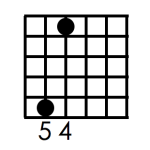
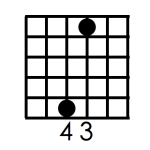
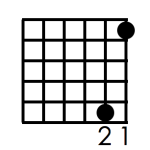
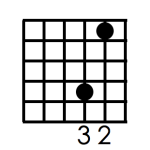
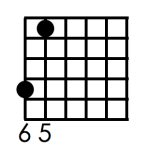
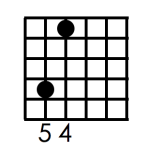
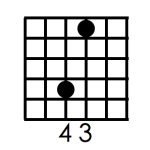
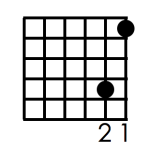
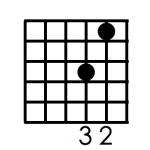
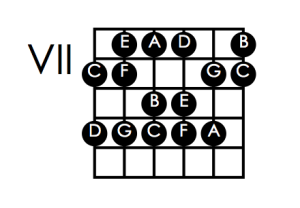


Leave A Response